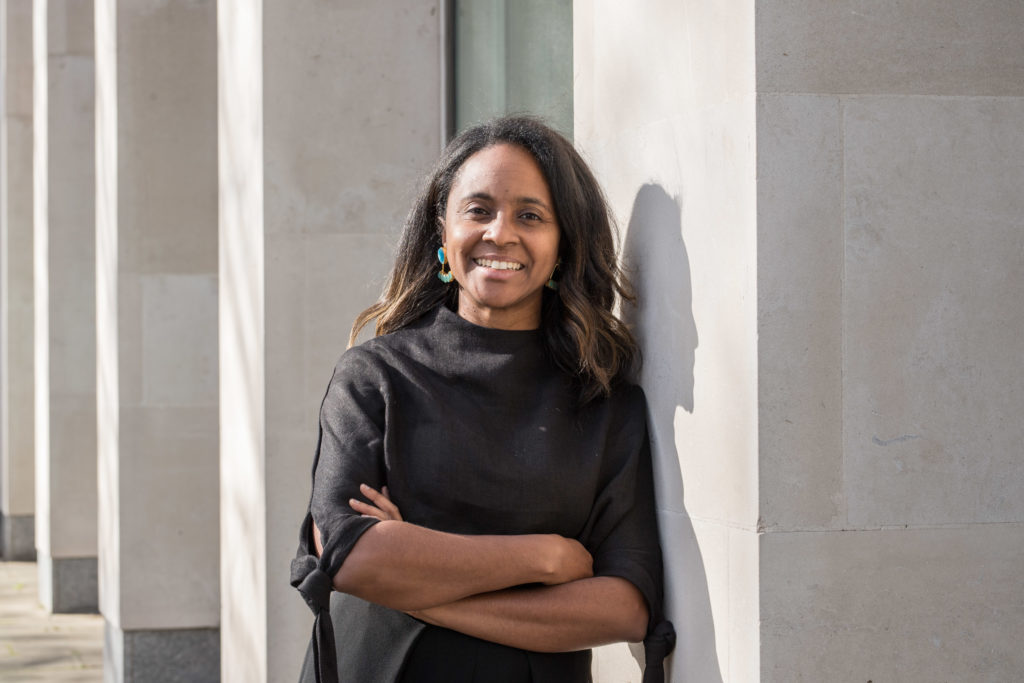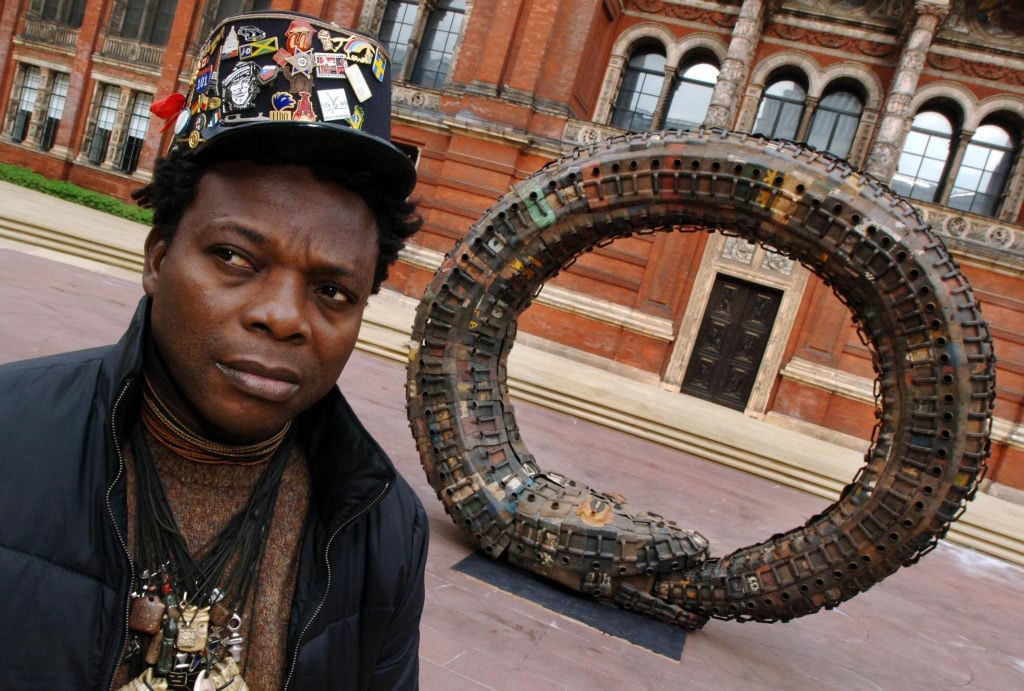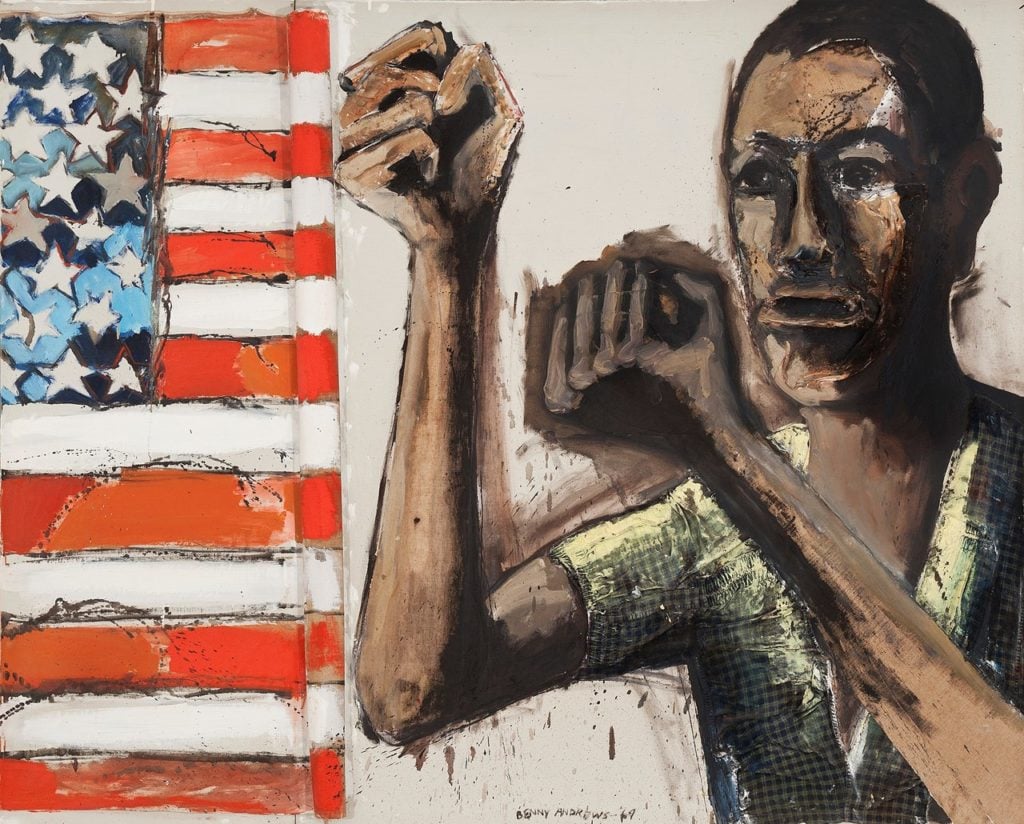People
‘She Wears Her Wisdom Lightly’: How American Curator Zoé Whitley Became One of the UK’s Most Influential Arts Leaders
Whitley, who became head of the Chisenhale Gallery in April, got her start as an intern at LACMA.

Whitley, who became head of the Chisenhale Gallery in April, got her start as an intern at LACMA.

Naomi Rea

Zoé Whitley’s beaming face was exactly the warmth I needed on a freezing winter’s day in February, when the curator took me to see a Cameron Rowland exhibition at London’s Institute of Contemporary Arts.
After we wound our way through the show—a conceptually dense presentation linking the history of the transatlantic slave trade to present-day systems of incarceration—we made a pitstop at the ICA café, where Whitley ordered a tea and, as she navigated our tray to a table, explained that she used to work in the service industry as a waitress.
“I don’t come from money,” Whitley, who was named the head of the nonprofit Chisenhale Gallery in London in January, told me at one point. “Gender and race and their attendant power—or lack thereof—are never going to be purely academic to me. It’s always part of the way that I am received or perceived.”
Waiting tables, she added, was “deeply unsatisfying” labor: no matter how hard you work, you often end up getting shortchanged.
“It’s another cultural vestige linked to indentured servitude, and to the history of not paying black people equally for their work.”

Romuald Hazoume with his work in “Uncomfortable Truths,” a show Whitley organized at London’s V&A Museum. Photo by Fiona Hanson – PA Images/PA Images via Getty Images.
Whitley doesn’t shy away from these kinds of discussions. In one room of the Rowland exhibition, a branding iron was positioned in a chilling face-off with a contemporary ankle monitor. It reminded me of “Uncomfortable Truths,” a show she curated in 2007 at the Victoria & Albert Museum to mark the bicentenary of the abolition of the British slave trade, and to examine its traces in contemporary art and design. The curator does not want to let history become “too cosy.”
“She understands exactly what is going down but wears her wisdom lightly,” said artist Lubaina Himid, who first met Whitley when she showed her work in that exhibition, a decade before she would go on to win the Turner Prize. Himid, who later became Whitley’s doctoral supervisor, said that each conversation between the two “stretched us both in different ways.”
Since then, in the span of just a few short years, the 40-year-old curator has played an important role in facilitating conversations about diversity in the art world as museums across the UK are reconsidering the canon.
In a rare opportunity for a mid-career curator, she organized the Cathy Wilkes exhibition at the British Pavilion at last year’s Venice Biennale. Before that, she was best known as one half of the curatorial duo behind the groundbreaking exhibition “Soul of a Nation: Art in the Age of Black Power,” a survey of mid-century works by African American artists illustrating their vital contributions to American art history. The extraordinary outing showcased 20 years of black art during the Civil Rights era, and included works by Frank Bowling, Betye Saar, and Barkley Hendricks. Three years after its debut at Tate Modern, it is still touring, and Whitley has just been recognized for her work on the show with an award from the Association of Art Museum Curators.
“Zoé has a very rich understanding of many of the key artists from the past 50 years whose work is only recently being collected by major art museums or receiving more widespread critical acknowledgement,” said Ralph Rugoff, the director of the Hayward Gallery, where Whitley was previously—and briefly—a curator. “She has a very keen grasp of the contemporary scene and a sharp eye for recognizing young artists who are doing truly innovative work.”
Whitley’s first—and, as it turns out, last—show at the Hayward, titled “Reverb,” which looks at sound artists including Christine Sun Kim, Kahlil Joseph, and Oliver Beer, will be her “introduction and swansong rolled into one,” Whitley said. (Slated to open in June, it has been postponed until at least the fall.)

Benny Andrews’s Did the Bear Sit Under a Tree (1969) at “Soul of a Nation: Art in the Age of Black Power” at Tate Modern. © Estate of Benny Andrews/DACS, London/VAGA, NY.
Whitley was born in Washington, DC, and raised by a father with a keen interest in film and a mother who studied art history with the late David Driskell at the University of Maryland. Her family moved to Los Angeles when she was a teenager. In the summer of 1999, while she was an art history undergraduate at Swarthmore College, she got a summer internship in LACMA’s costume and textiles department under the supervision of Sharon Takeda, who still runs the department today.
“She was an LA kid and came in bright-eyed and bushy-tailed, and was obviously extremely bright and energetic,” Takeda recalled, noting that she still has the feathered and beaded bookmark (an ode to Tom Ford’s iconic jeans for Gucci) that Whitley made for her as a thank-you that summer. By the end of the internship, Takeda and her colleague, Kaye Spilker, suggested that Whitley consider curating as a career.
“There’s something special about being seen, even at a young age,” Whitley told me. On their advice, she applied for the Royal College of Art’s design history program and later graduated with a master’s thesis looking at representations of blackness in Vogue magazine. Soon after, she took a job as an assistant curator at the V&A, and has now lived in South London for 20 years. “London continues to appeal to me for the way that it is able to welcome and absorb so many different cultures,” Whitley said.
But it was still a few years after she took the V&A job that Whitley made the pivot to working with contemporary artists. She vividly recalls attending the opening of a David Adjaye and Faisal Abdu’Allah exhibition at the Chisenhale in 2003. “Before that, I didn’t really have the sense that it was possible to know artists and to actually talk with them,” Whitley said.
![Ima-Abasi Okon, <i>Infinite Slippage: nonRepugnant Insolvencies T!-a!-r!-r!-y!-i!-n!-g! as Hand Claps of M’s Hard’Loved’Flesh [I’M irreducibly-undone because] —Quantum Leanage-Complex-Dub</i>(2019). Installation view, Chisenhale Gallery, 2019. Commissioned and produced by Chisenhale Gallery, London. Courtesy of the artist. Photo: Andy Keate.](https://news.artnet.com/app/news-upload/2020/04/23_Ima-Abasi-Okon-at-Chisenhale-Gallery-1024x683.jpg)
Ima-Abasi Okon, Infinite Slippage: nonRepugnant Insolvencies T!-a!-r!-r!-y!-i!-n!-g! as Hand Claps of M’s Hard’Loved’Flesh [I’M irreducibly-undone because] —Quantum Leanage-Complex-Dub (2019). Installation view, Chisenhale Gallery, 2019. Photo: Andy Keate.
As head of the Chisenhale, an institution known for its ambitious projects, Whitley plans to commission works from a wide range of artists.
“Productively, we’ve moved beyond a kind of YBA model,” Whitley said. “An artist doesn’t have to be young to be making excellent work, and to be at that pivotal point in their career when a Chisenhale commission might be exactly the thing to help ignite wider public interest.”
Whitley started in the role at the beginning of April, as the coronavirus crisis put unprecedented pressure on museums and galleries.
“I think the art world gets caricatured as being hyper-competitive, with everybody wanting to be first, or for something to be exclusive or original. But one thing I’ve seen is a huge amount of generosity, because everybody is facing the same thing,” she said, noting that she has witnessed productive, healthy dialogue between directors of smaller institutions.
And despite what appears to be a grim outlook for small institutions amid the crisis, Whitley has reasons for optimism.
“This forced reset is giving everyone time to think,” she said. “We can’t do what we’ve been doing. So people are asking: what might the alternatives look like?”